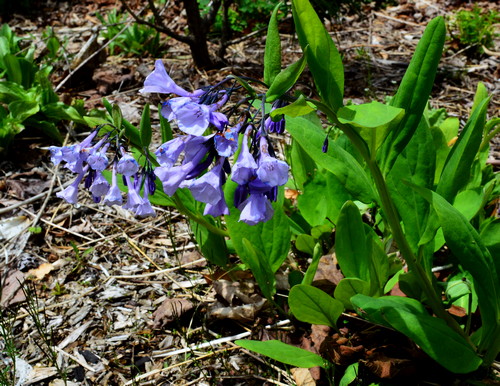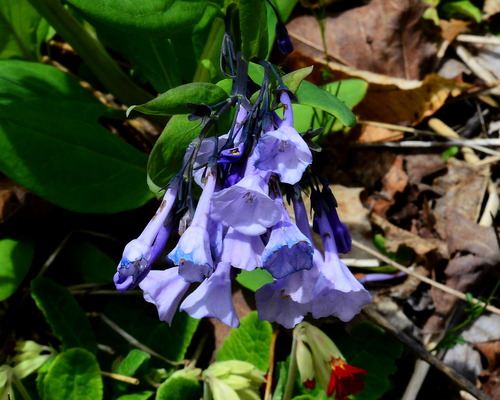Mertensia virginica is a delightful spring ephemeral with soft blue flowers. Easily grown in shade or part shade, and requires no effort from the gardener. Plant and forget it. You don't even have to clean up the foliage as it just disappears under other garden stars that grow later in the year.
Mertensia virginica, photo by Robert Pavlis
Common names include Virginia bluebells, Virginia cowslips, lugwort oysterleaf and Roanokoe bells, although I have to admit I have only ever heard the first name, Virginia bluebells. The common form has blue flowers but it is also available as an 'alba' (white) and 'rubra' (pink) form.
Virginia bluebells is part of the Boraginaceae family along with forget-me-nots (Myosotis) and lungwort (Pulmonaria). All of these flower in a unique way. The buds start out pink and as the flower opens it turns blue, telling pollinators that it is ready for a visit. It is believed that this color change is due to a pH change in the cellular fluids. Some hydrangea flowers can also change between blue and pink which is due to plant-available levels of aluminum in the soil, which in turn is affected by soil pH. The blue color of Virginia bluebells does get more intense in acidic soil but I found no references to suggest it has to do with aluminum levels, but that is likely the case.
Mertensia virginica, photo by Robert Pavlis
Even though it is called a bluebell, the flower is more trumpet-shaped (salverform) than bell-shaped (campanulate).
I find the plant grows slowly in zone 5, part shade, pH 7.4. The clumps are getting bigger, but not as fast as I'd like and there are few if any natural seedlings. It can be grown from seed which is best sown immediately after collection. If they are stored over winter the seeds need cold-moist stratification for six weeks.
Mertensia virginica
(mer-TEN-see-uh vir-JIN-ih-kuh)
Life Cycle: perennial
Height: 30cm (1 ft)
Bloom Time: late spring
Natural Range: North America
Habitat: woodlands
Synonyms: none
Cultivation of Mertensia virginica:
Light: part shade to full shade
Soil: variable, prefers humusy soil
Water: moist to dry
USDA Hardiness Zone: 3-9
Propagation: seed, division
Post created by Robert Pavlis



